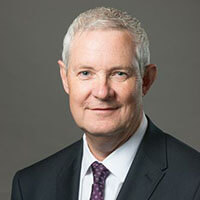The ICT industry has always been the heartbeat of businesses’ digital services and technology initiatives. Those services and initiatives are becoming more important than ever, and so is ICT’s role in making it all work. If the ICT industry is the heartbeat, the data centre is the heart.
Energy Efficiency Becoming a Renewed Focus
It is an area that has remained relatively unchanged for years, barring natural increases in speed and efficiency. But that is no longer the case. The entire nature of data centres is changing fast and ICT professionals need to be in the know to be able to capitalise on this
Building Blocks to IoT and Smart Cities
This year we have already seen real-life pilots for the internet of things (IoT) and smart cities. After spending many years in the “hype” phase, our intricately-connected cities are at our doorsteps. Businesses and governments alike in Australia are investing in developing smart cities such as Adelaide, while the deployment of smart features such as parking applications are coming into play.
As time goes on, these smart features will begin to come together and, before we know it, we will be living in the smart cities we have been anticipating for many years.
IoT presents opportunities for virtually any industry related to technology, so naturally the ICT industry will play a vital role. Research from KPMG indicates that IoT will deliver $11 trillion to the global economy by 2025, with Australia collecting $120 billion annually. The infrastructure required to manage smart cities is currently not fully in place, but it is getting there.
Development of Edge Technology
Huge potential for making smart cities work is in the development of edge technology. The edge represents entry points into enterprise or service provider core networks— traditionally this has meant equipment such as routers, switches and desktop computers. In recent years this has grown to include the likes of tablets, laptops, smartphones and wearables. With IoT and smart cities on the horizon, exponential growth of devices is now added into this mix.
While the term may be labelled as smart city, the reality is that the connectivity and features of smart cities will be available to towns and regions of all shapes and sizes, anywhere in the world.
Australia is uniquely positioned when it comes to edge technology. For example, compare it to the United Kingdom (UK). Imagine a device or a service in a rural area in the UK relying on a core data centre in a major city a few hundred kilometres away to operate. Assuming all other variables such as broadband speed and efficiency of the device are sound, the distance should create only minor latency issues and have a minimal impact on performance. Essentially, a user of that device or service in that rural area should have a replicable, or at least very similar, experience to someone using it right next to the core data centre.
Now move that scenario to Australia, where thousands of kilometres can lie between that rural area and the core data centre in a major city. Minor issues become major when the distance is increased by that much. A good example is the challenge in trying to connect the country’s broadband capability through the National Broadband Network.
Australia’s uniquely disperse population, coupled with their reputation as an early adopter of technology, will drive edge technology faster than other regions.
Once a population becomes accustomed to smart cities, the technology, applications, devices and all other things IoT will spread across the country at a rapid pace. Regional locations will need to have edge technology fully functional or the experience will not be the same.
The Edge of Modular Data Centers
Modular data centres are a cornerstone of edge technology and are quickly being deployed in Australia and around the world. These devices are compact, plugand-play data centres for branch or regional offices—or potentially the entire data centre for smaller businesses that can efficiently manage the needs for on-site computing and networking or cloud services. On our journey towards smart cities, modular data centres will be the silent partner in the background keeping the lights on, unbeknownst to everyday users of what will become everyday technology.
Research from Frost & Sullivan estimates that modular data centres will play a major role in the wider “data centre services market,” set to grow at 12.4 percent in Australia until 2022 and exceeding revenues of $2 billion by 2021.
The research and development, design, integration, deployment and maintenance of these devices will make up a huge percentage of these revenues. Recently, Vertiv conducted a survey among IT, data centre and facilities professionals and the results pointed to cooling, capacity, service and maintenance as being the top concerns when it comes to edge technology.
Emergence Of the 'Generation 4' Data Center
Alongside the proliferation of edge technology and modular data centres, a wider change in the very nature of how to design and use data centres is becoming a reality. Generation 4 holistically and harmoniously integrates the edge and core, the latter remaining a vital part of the equation, even with the rapid development of and reliance on the edge. The necessary deeper connection between the two will elevate these architectures beyond simple distributed networks as we have known them.
Innovative architectures delivering near real-time capacity in scalable, economical modules that leverage optimised thermal solutions, high-density power supplies, lithium-ion batteries and advanced power distribution units are already being seen in the ICT industry. Pulling it all together are advanced monitoring and management technologies that allow the new data centre environment to be controlled from a single pane of glass.
This means hundreds or even thousands of distributed IT nodes operating as a unit, reducing latency and up-front costs, increasing utilisation rates, removing complexity and enabling organisations to add network-connected IT capacity where needed. Essentially, it means more choice for customers, and the ability to provide that choice will be vital.
Renewed Focus on Energy Efficiency
Rising energy costs, along with growing enthusiasm for energy efficiency, has led organisations in Australia to optimise their data centres. The cost increases mean the potential cost savings from optimisation are even greater and becoming more difficult to ignore. Organisations that optimise their data centres significantly can also be awarded one-time government grants, such as the New South Wales energy savings certificate payment, which alone can mean cost savings of $100,000 or more depending on the extent of the positive environmental changes. Other states have similar certificates in place.
Across a variety of industries, particularly telecommunications, financial services and other ITintensive industries, businesses are working with experts to provide optimisation services that include cooling, power metering and monitoring to ensure data centres are using as little energy as possible while remaining secure and always operating. The added benefit to this is that these businesses now have further IT capacity for digital services using the same amount of power and without having to deploy extra infrastructure.
Bracing for Change
The bottom line is that technology is moving fast, and while consumers simply expect it to work all the time, those of us at the centre of the ICT industry know it is not as simple as that. With the fluid integration of technology being used to make our lives easier and the world of smart cities a reality, IoT is going to require huge infrastructure and expertise. How the data centre is changing may not be the most exciting part of this new era of technology evolution but—make no mistake about it—being able to be part of it is a lucrative opportunity and an essential part of the technological future that is coming.
Copyright BICSI. Reprinted with permission from BICSI.






